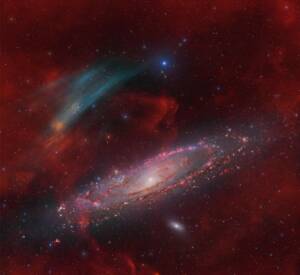
Discovery of the M31 [OIII] emission arc
Recently, a major discovery by an international team of amateur astronomers and scientists has become a huge online hit, and this new discovery is just located in one of the

Hello Richard, thanks for accepting our interview invitation. Congratulations on winning the ASIWEEK competition in week #41/2023!
Thank you very much, I am honored that you have selected my image as image of the week. My name is Richard McInnis. I live in the Chicago area with my wife and children. I am a Real Estate Investor/Developer by profession, and I do all my Astrophotography from my bortle 8 backyard.

I started in Astrophotography back in the summer of 2020 during the Covid-19 pandemic after seeing a telescope for sale online. At the time we could not move around freely due to pandemic-era restrictions and when I saw the telescope, I thought, this could be something fun to use at home.
About a week later, after doing a bit of research about telescopes and watching a few YouTube videos, I decided to purchase an 8 inch Celestron SCT on an Alt/Az mount. I initially intended on using it just to observe the moon and anything else I could find. Once I was able to focus the telescope, I was so fascinated by what I saw through the eyepiece I decided to purchase a DSLR camera to attach to the telescope so I could photograph the moon. All of this was happening quickly-within about a week.
During this time my research about telescopes lead me to a few Facebook groups about Astrophotography. I remember seeing my first image of Nebulae and Galaxies and was so fascinated and in awe that such photographs could be taken by amateurs, using a backyard telescope. Within about 2 weeks of getting my first telescope I realized I wanted to take images of deep space objects and decided to purchase an Equatorial mount to enable long exposure Astrophotography. During that time, I came across ZWO and the various software and hardware tools offered, including ASIAIR, cooled cameras, etc. to allow for a more streamlined image acquisition. And that’s how the journey began.
I love astrophotography because it is very fascinating that I can bring deep space alive using amateur gear from the comfort of my backyard. Using simple color mapping tools and image development processes, I can transform ionized gases in deep space into artistic masterpieces. I also like the challenges associated with acquiring, calibrating and tapping into the range of color palettes and the plethora of artistic interpretations that exist. All of this allows me to reconnect with my childhood love of Art.
The hobby has also reminded me of how tiny we are on Earth, relative to the rest of the universe. It has reminded me no to sweat the small stuff, especially when faced with challenges.

I do all my astrophotography from my bortle 8 backyard. I have not ventured to any dark skies yet. I love the challenge and convenience of imaging from my backyard. My seeing conditions are typically average. During the Spring and Autumn months, I especially prefer the cooler longer nights as there are more clear nights available. This time period also brings slightly better seeing conditions in my area.

My widefield image of the North America and Pelican Nebulae was taken using my Williams Optics Red Cat 51 (250mm) and my ASI2600MM Pro on my ZWO AM5 mount. I used Antlia 3nm SHO filters. Interestingly enough, I had recently converted my Red Cat to a mono rig after it sat in my office for over a year unused—I was primarily using my longer focal length SCTs after I made the switch to mono. So essentially this was my first light with the rig in its current mono configuration. I decided to image that area of the night sky after seeing some fascinating widefield images of the Cygnus Constellation last summer. This was supposed to be my first widefield of the summer, needless to say, I have a few other projects that are in the works of Cygnus. I decided I would capture several hours of data and I ended up with about 30 hours of five minute exposures. This area has very good signal in all three narrowband channels (Sulphur, Hydrogen, and Oxygen) and I figured it should be a fun project to capture and process. I ended up processing this image a few times including a few crops of various areas that show very fascinating structures I did not notice before in other images of the area. In the end, I decided that the area of the sky was best represented in a tri-color Hubble SHO palette to better showcase its magnificence.

I have telescopes of varying focal lengths, from my Red Cat (250mm) used to capture my recent ZWO image of the week to a 4,000mm focal length, reduced to 2,700mm.
I spent my first year using one shot color cameras (294MC and 2600MC Pro); I decided to make the switch to monochromatic imaging at the start of my second year in the hobby. I took my second year off from processing images. I was acquiring data but could not make the time for processing due to other priorities at the time. I finally got caught up my processing my first sets of mono images the end of last year. I currently only use the 2600MM Pro with my gear along with the ZWO EFW, 3nm filters and certainly ASIAIR. Due to limited clear nights, I typically have at least four rigs acquiring data on clear nights; I have run up to seven thanks to ASIAIR Pro.

I believe post processing of images is one of the most if not the most important aspects of Astrophotography, after all, we invest in our gear and spend countless hours acquiring data so we can be amazed by the result. I do all my image processing in Pixinsight. I believe their weighted batch processing works quite well. I only employ a few simple processing steps, such as Background Extraction, Color Calibration, Deconvolution (BlurX) and Noise Reduction (NoiseX) before doing quick Histogram Transformation (HT) followed by another round of NoiseX. Next, I remove the stars (StarX) and perform another round of HT where I attempt to stretch the image to achieve an acceptable color balance. Next step is to add a slight amount of Local Histogram Equalization and Multiscale Linear Transformation. Most times I use the recommended settings for each process applied. I spend a fair amount of time stretching my images manually by trying various degrees of color balance then I’ll compare the results to see which one best represents the target. Next, I use the Curves tool to tweak the color a bit and add desired saturation. I find that a good computer monitor is important during post processing as this ensures that colors will be accurately displayed when once shared online. A good check of the quality of your computer monitor is to send the image from the computer to a smartphone such as an iPhone to see how differently the image is displayed across the two devices. Note the differences and determine if it’s worthwhile investing in a new monitor.
I have not been able to actively participate in extracurricular astronomy activities due to other interests and commitments. I do network with other imagers provide informal assistance to other amateurs, as had been afforded me by so many experienced imagers in my early years in the hobby. Finally, I am huge proponent of Astrophotography and I’m constantly sharing my images with friends to demystify the hobby.
My passion for the producing astronomical photos makes this a challenge. The first thing I try to do is to be mindful of how much time I spend on any one activity (hobby or otherwise). Family and friends are very important to me, so they come first. Since I am self-employed, I try to manage my time appropriately between family, hobbies, and other interests as best as I can.
The automation solutions offered by ZWO has made a tremendous difference in the time I spend managing my equipment while imaging on clear nights. This frees up a lot of my time to spend with family while imaging on clear nights. I also have a passion for aviation, I am also a Pilot; I pursue this interest during the daytime, so it does not interfere much with my nighttime astrophotography pursuits.
Much of the thrill for me revolves around the process of acquiring and developing astronomical images. I try to enjoy the process as much as I enjoy the results.
Some of my fondest astrophotography moments have been centered around messages received from others about how much they enjoy my images or how they’re inspired by them. They remind me of the thrill I felt when I first saw backyard astronomy deep sky photos that first inspired me to pursue the hobby. I try not to forget that feeling.

Some of my images have been recognized as Amateur Astrophotography Photo of the Day (AAPOD2) in the last several months. Certainly, my image of the week recognition from ZWO or other times when my images have been featured by ZWO.


I was fortunate that I discovered the hobby at the time that I did. I use ZWO exclusively for imaging. I don’t have any experience using a laptop to control my gear. Luckily, ASIAIR was around when I started in the hobby, and it has made Astrophotography easier and more enjoyable. Given the automations associated with ASIAIR and given the limited clear nights in my area, I typically run multiple telescopes on clear nights to capture as many photons as possible, I can’t imagine what it would be like to lug multiple laptops outdoors to connect my gear; ASIAIR has certainly made image acquisition a lot more streamlined. I remember when ZWO EAF was released and that was probably one of the final pieces to the automation puzzle. I’m sure there are more innovative tools that will be released to make things even more automated.

Aside from having a good mount for proper guiding, I’d say one should develop a good understanding of each phase of the image acquisition process. Leverage tools such as ASIAIR to keep things simple. This hobby is already a complex one, take the path of least resistance and don’t reinvent the wheel.
Secondly, cultivate a network of astrophotographers that you admire and learn as much as you can from them—ask them questions where clarification is needed, whether it is about what gear to acquire or how to use them; don’t be shy about messaging them. This approach worked for me when I started, and I was fortunate to have connected with imagers that were open to sharing their best practices and offering advice. Good mentors can go a long way in this hobby.
Lastly, we spend a ton of time acquiring gear and learning how to use them. It is equally as important to invest time learning how to process an image and even consider taking personal lessons with the pros to develop a good workflow; bad image processing skills can make good data go to waste.

I was fortunate to learn about the ZWO when I first got into the hobby, thanks to TJ. As such, I did not spend a ton of time spinning my wheels to learn some of the more complex acquisition software out there. Everything about the ASIAIR made sense to me when I first started, and it has made learning about the hobby that much more enjoyable. I generally keep my gear outside and I can typically get up and running within five to 10 minutes thanks to the suite of automations that exist within the ZWO ecosystem. I also like my 2600MM Pros, and without a doubt EAF.


Recently, a major discovery by an international team of amateur astronomers and scientists has become a huge online hit, and this new discovery is just located in one of the
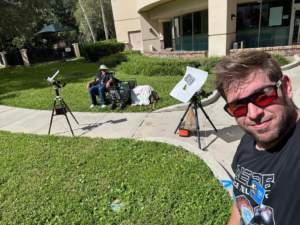
That 11-year-old boy staring at Horsehead Nebula photo would never have imagined… Decades later, he’d be capturing amazing deep-sky images from his Florida backyard! “ It was amazing to see

Hello,Sara Harvey,thanks for accepting our interview invitation. Congratulations on winning the ASIWEEK competition in week! Q1: At first, congratulation that your nice image won #ASIWEEK. Can you introduce yourself to
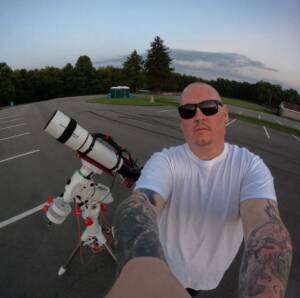
Astrophotography is more than just capturing images of the night sky—it’s a journey of discovery, patience, and creativity. For this passionate astrophotographer, what started as a chance encounter with a
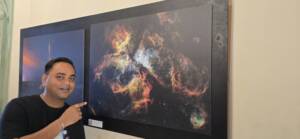
Taranjot Singh, an Indian origin Australian astrophotographer who is making waves on the international stage. Taranjot has been recognized as one of the Top 5 finalists in the prestigious Siena
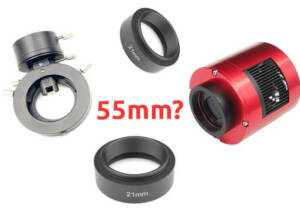
The back focal length is advised by telescope manufacturers. Since most telescopes have a 55mm back focal length, we are here to provide detailed instructions for all ASI cooled cameras.Please